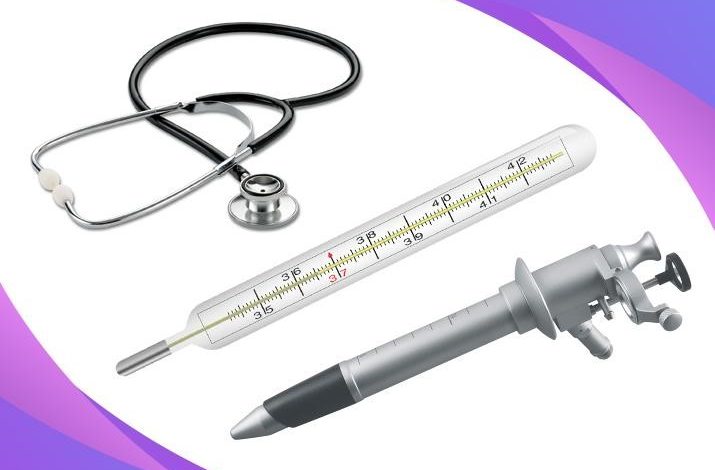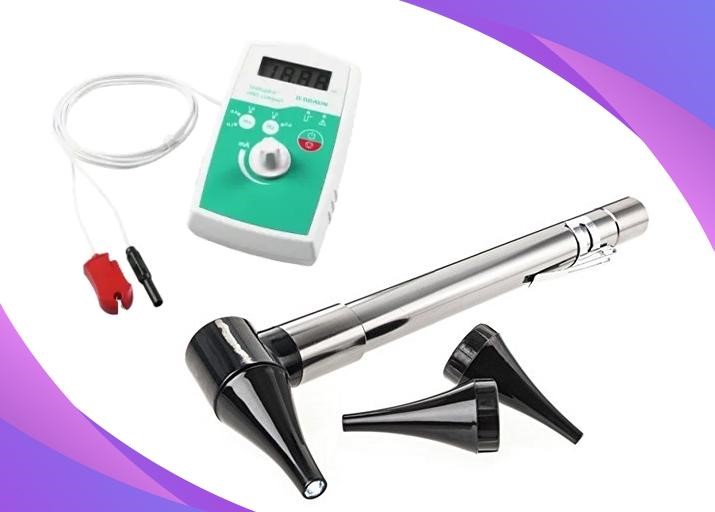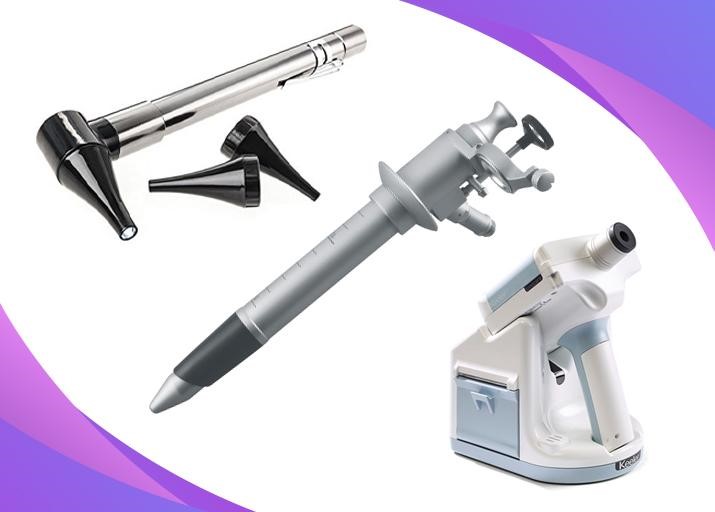
It is impossible to treat a disease without knowing its cause and severity. The situation is the same in the cases of animal diseases. So, veterinary experts need different diagnostic instruments to diagnose various issues. Thus, the next step starts with treating such animal diseases. No veterinary expert will suggest medicine or treatment without proper diagnosis.
This blog will teach you about different diagnostic instruments and their uses. So, let’s understand the diagnostic instruments and their types.
What Are Diagnostic Instruments?
A diagnostic instrument is a medical tool for identifying the nature or cause of particular animal diseases. Such instruments include manual, automatic, or semi-automatic machines for diagnosing different diseases. There are multiple diagnostic instruments that veterinary experts use for identifying various issues.

The other diagnostic tools are categorized depending upon the nature or location of the disease. The material and features of such tools matter as they play a vital role in starting animal treatment. Let’s enlist the most common diagnostic tools for better understating.
Different Diagnostic Instruments
The diagnostic tools are specific. Thus, there is a wide range of the diagnostic instrument that surgeons use. Some of them are listed below
- Anoscopes and sigmoidoscope
- Clinical thermometers
- Diagnostic instrument sets and accessories
- Diagnostic lights
- ENT equipment
- Laryngoscopes and accessories
- Nerve stimulators
- Ophthalmoscopy
- Otoscopes
- Stethoscopes
- Tonometer’s
Let’s discuss them individually to understand their functioning better.
1. Anoscopes And Sigmoidoscopy
Such diagnostic instruments help to diagnose the issues related to the anus, rectum, and colon. Besides, they also help to identify the issues with screening tests such as sigmoidoscopy and anoscopy.
Such tests will provide information about the patient’s health status if they suffer from polyps, bleeding, tumors, or inflammation.
2. Clinical Thermometers
Veterinary experts use clinical thermometers in various areas and dimensions, from routine tests to emergency care. Such an electronic thermometer takes less time to tell the temperature of the animal patient. Further, the surgical tool has an innovative design that the medical practitioner can set on different body parts, e.g., mouth, ear, armpit, and rectally.
The clinical thermometers provide significant assistance to veterinary experts. Moreover, the diagnostic tool is available in different sizes and prices.
3. Diagnostic Instrument Sets and Accessories
Veterinary experts use such diagnostic instruments to diagnose the patient’s eyes, ears, and throat. Such diagnostic instruments and accessories are efficient in assisting veterinarians. So, the veterinary expert can closely observe and examine the patient’s health.
After diagnosing the cause and nature of the animal disease, the next step is treatment. So, such diagnostic tools and accessories are mandatory for starting the surgical procedure.
4. Diagnostic Lights
Animals are innocent creatures, so they cannot tell about the location of the pain and its intensity. So, a proper diagnosis is essential to understand the nature of the issue from which the pet is suffering. Veterinary practitioners use a variety of diagnostic lights for animal visual diagnosis.
The different diagnostic lights include H&H’s daylight-stimulating and full-spectrum fluorescent lighting. Such lights feature natural white light, which helps the veterinarians to differentiate the colors, details, and shades of the area under observation.
Surgeons can perform with greater efficiency by using sunlight-stimulating lights. The right choice of diagnostic lights helps complete the diagnosis more precisely.
5. ENT Equipment
The use of such diagnostic instruments is for diagnosing the issues related to the nose, neck, throat, and neck. The ENT instruments include exam tables, electrosurgical units, otoscopes, ENT workstations, ENT endoscopes, ENT treatment cabinets, and ENT chairs.
6. Laryngoscopes And Accessories
Veterinary experts use laryngoscopes and accessors to identify issues in the vocal cords or throat. Laryngoscopes are efficient diagnostic tools that remove the small growths on the vocals. Such growths are usually tumors or polyps that affect the functioning of vocal cards. In addition, the laryngoscope features a small laser that burns away the abnormal parts or growths.
7. Nerve Stimulators
Veterinarians use nerve stimulators to block pains from reaching the brain. In short, the nerve stimulators stop the nerve endings from feeling the pain. So, the animal patient cannot feel anything hurting in the brain.
Additionally, the spinal cord stimulator relieves pain by sending the lowest levels of electricity to the patient’s spine.
8. Ophthalmoscopy
is the diagnostic tool that veterinary experts use to examine the eyes. Such diagnostic instruments efficiently evaluate and detect the symptoms of eye diseases. Furthermore, they also identify the issues of retinal detachment, such as glaucoma.
Moreover, ophthalmoscopy includes the examination of the back of the eyes. So, the veterinary surgeon can observe the retina, optic disk, and blood vessels. All such features assist the veterinarians to quickly diagnosing the nature of the animal eye disease.
9. Otoscopes
Otoscopes are among the most crucial diagnostic supplies. Veterinary surgeons use otoscopes to examine the ear canal. Moreover, it provides a clear view of the tympanic layer. Thus, it assists the veterinarian in diagnosing ear infections. Also, it helps to find out the causes of tinnitus and vertigo.
Furthermore, the diagnostic supply features a light magnifying glass that gives a clear view of the inner and outer ear.
10. Stethoscopes
One of the most common diagnostic instruments is a stethoscope. Veterinary experts use stethoscopes to hear the sound of the heart, lungs, arteries, and bloodstream in the blood vessels. So, the veterinarian can record the beatings and observe whether they are normal.
Besides it, veterinary practitioners also use stethoscopes for diagnosing various diseases such as bronchitis, heart disease, heart valve issue, etc. Moreover, the other use of a stethoscope is the sphygmomanometer for measuring the patient’s blood pressure. At the same time, electronic stethoscopes are better as they deliver improved sound quality. Also, the attached computer with them saves and records sound waves.
11. Tonometer
The use of the tonometer’s is for measuring the pressure inside the patient’s eye. Such diagnostic instruments help in screening and examining glaucoma. The regular examination of the eyes helps to diagnose glaucoma at the initial stages. Besides, the primary use of glaucoma is measuring the mercury pressure in mmHg.
All the diagnostic tools are specific to diagnosing disease in a particular body part. So, each tool is different in its function and structure. But it is essential to use reliable and sterilized diagnostic supplies.
Are You Looking for Premium-Quality Diagnostic Instruments?
Diagnostic instruments play a crucial role in diagnosing a particular ailment. So, they are essential in the treatment procedures of animals. Therefore, veterinarians want high-quality diagnostic tools for their clinics. There are many manufacturers and suppliers available in the market that deal with medical instruments. However, finding a reliable source to get veterinary instruments is difficult.

But the veterinarians need not worry about the quality of the instruments with Vet and Tech. They offer premium quality diagnostic and surgical supplies. Their instruments are German forged, so they are durable and robust. Moreover, the instruments are corrosion and rust-free.
FAQ’s
What Are Diagnostic Instruments?
Surgeons use diagnostic instruments to diagnose various animal diseases. So, veterinary experts can prescribe accurate medications and treatments.
Why Do Surgeons Use Stethoscopes?
Surgeons use stethoscopes to hear the sounds of the heart, lungs, arteries, and bloodstream in the blood. Moreover, they also help measure the pet patient’s blood pressure.
What Is the Role of Tonometer’s in diagnosing animal diseases?
Tonometer’s measure the pressure inside the patient’s eyes. Also, tonometer’s help to examine and diagnose glaucoma. The diagnostic instrument also measures the pressure of the mercury.